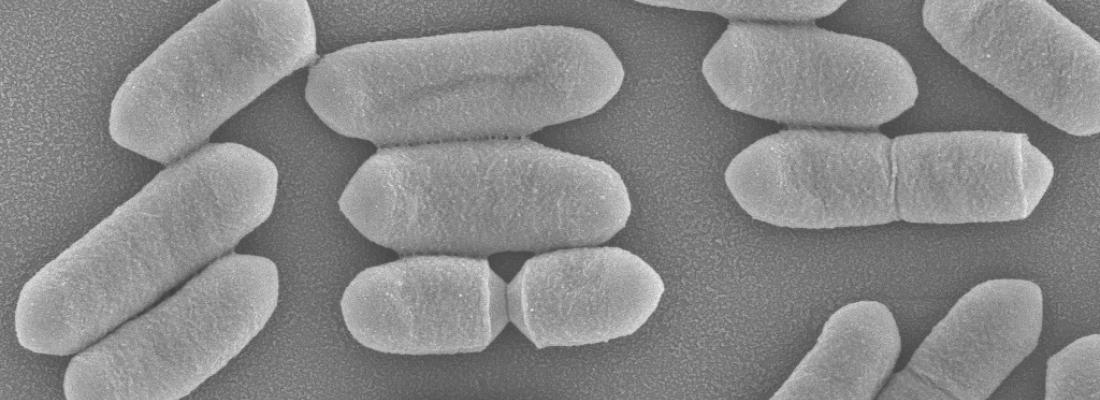Food, Global Health Reading time 4 min
War in the gut microbiota: some Listeria bacteria produce a contact antibiotic
Published on 05 November 2021

Listeria monocytogenes is a pathogenic bacterium generating listeriosis, a foodborne disease, that can have serious consequences in immunocompromised, elderly people, or pregnant women, causing for example meningitis or miscarriage. In France, the disease remains rare (5 to 6 cases per million inhabitants), but fatal in 30 to 40% of cases occurring outside pregnancy.
The most serious epidemics of human listeriosis are associated with certain particularly virulent strains of the bacterium Listeria monocytogenes. These strains are able to produce a peptide, listeriolysin S, which has antibiotic properties.
Unlike other bacterial molecules with antibiotic properties, listeriolysin S does not diffuse into the environment but remains associated with the membrane of the bacterium, killing other bacteria only when it comes into contact with them.
This was revealed by a breakthrough study published in the journal PNAS and carried out by several teams from the Institut Pasteur, the CNRS, Inserm, Spanish and American partners, and the INRAE MICALIS research unit within the Epigenetics and Cellular Microbiology team led by Hélène Bierne.
Targeted action to modulate the composition of the microbiota
In the mammalian intestine, Listeria is therefore able to express listeriolysin S on its surface. The molecule weakens the membrane of certain bacterial species when they are in contact, leading to their death. "Some of our preliminary results suggest that listeriolysin S is a very hydrophobic molecule, which is not soluble in water. Contact between a Listeria and a susceptible bacterium would therefore allow the passage of listeriolysin S directly from the membrane of the Listeria to that of the susceptible bacterium, avoiding a passage through the external liquid medium," explains Javier Pizarro-Cerdá, from the Institut Pasteur.
Listeria is thus able to modulate the composition of the intestinal microbiota, so that Listeria is less subject to competition from other bacteria. Listeria is thus able to better infect the intestine, then deep organs such as the liver or the spleen, and finally the brain or the placenta. Listeriolysin S is therefore associated with the high virulence of the strains that produce it.
Unusual strategy in the world of bacteria
The discovery of the contact-dependent activity of listeriolysin S is original because it is a rare strategy in the bacterial world. By not releasing this molecule into the environment, Listeria prevents other bacteria, resistant to this molecule, from potentially benefiting from the presence of listeriolysin S. "Furthermore," adds Javier Pizarro-Cerdá, "Listeria will only kill bacteria that take advantage of the same environment and resources as itself. It only kills bacteria that are close to it, and does not waste its resources by producing a molecule that could go far to kill other bacteria."
Hélène Bierne explains, "What is also interesting, is that Listeria has developed an 'immunity' to listeriolysin S, preventing the bacilli of this species from self-destructing when they get in close contact with each other."
These original results were enabled by accumulating extensive knowledge for years on this bacterium and using advanced microscopy techniques. The INRAE Epigenetics and Cellular Microbiology team led by Hélène Bierne, contributed to this discovery through its expertise on the molecular properties of the surface of this food pathogen.
